With the statement that the dacha - the best place for rest and unity with nature it is difficult to argue. Many residents of the metropolis in the spring and summer without regret leave comfortable apartments and move to country houses. Where else if not here you can enjoy the fresh air and the atmosphere of home comfort? If country estates are not as cozy as you want, it's time to think about decorating a country house. This is one of the most effective ways to give the building a unique look and make the dream of a paradise away from the eternal bustle of a crowded city come true.
Exterior decoration of a country house
Exterior decoration is an effective method to transform the design of the house, give the building a modern look, insulate it and protect it from the effects of precipitation. There are quite a lot of materials for sheathing today, but the most popular options are the following:
Siding
No wonder this material occupies a leading position. It is hardly worth giving up the opportunity to get a huge "bag" of valuable benefits at a very affordable price:
- a wide range of colors;
- quick alignment of the facade;
- concealment of minor defects;
- durability;
- neutrality towards negative influence natural phenomena;
- additional insulation;
- ease of installation.
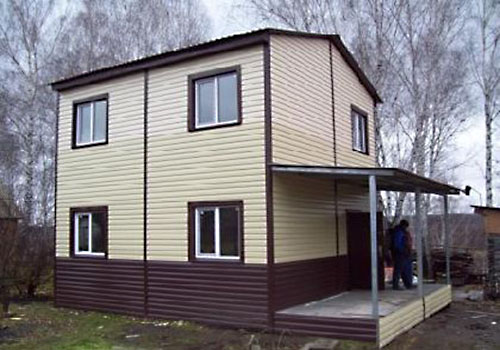
The pros are endless. Non-combustible, non-corrosive, rotting and peeling. Siding does not require maintenance, if necessary, the damaged area is easy to replace, and this sheathing material also has high sound and wind insulation. If you want to forget about outdoor repairs for a long time, the need for plastering, painting and other unpleasant manipulations, then decorating a country house outside with siding panels will be a one-time solution to many problems.
Blockhouse, false timber and lining
Many owners of cottages want to give the building a special respectability. And what could be more beautiful than wood? Finishing the facade of a country house with materials made from natural wood is a trend that does not lose its relevance.
False timber creates an imitation of timber, a blockhouse - rounded logs. False timber is a sheathing board that provides many benefits:
- strength;
- a light weight;
- no need for thermal insulation, tk. wood - perfectly retains heat;
- low humidity and, as a result, resistance to decay and fungal diseases;
- creating a perfectly smooth surface in the shortest possible time;
- preservation of original qualities for a long time;
- false timber is not deformed and does not crack;
- environmental friendliness;
- aesthetic appearance;
- acceptable cost.
Blockhuas outwardly resembles a log, but its operational characteristics are higher. This material is durable, smooth, does not crack or bend, has good noise and heat insulation, is fireproof, and resistant to ultraviolet radiation.
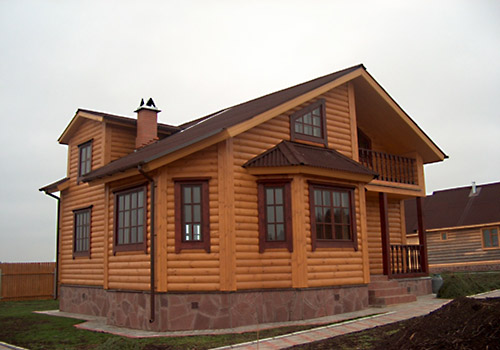
Blockhouse - a type of lining, a board that has a convex wall on one side, and a flat one on the other. The ribs of the panels are equipped with a thorn-groove system, which makes finishing a country house with your own hands quick and easy.
clapboard
If the blockhouse and false timber can be called innovative trends of our time, then eurolining is a classic that looks no less worthy, because it is in no way inferior in quality to its counterparts in the finishing shop:
- the material is environmentally friendly and fireproof;
- retains the original parameters throughout the entire period of operation
- sheathing can be done on your own;
- there is no need for additional impregnation of the panels, because lining is delivered with bioprotection.
Decorative plaster
Usage decorative plaster will be a way out if you want to update the facade quickly and at minimal cost. The structure of the material can be varied and depends on the type of grit and aggregate. Marble chips, quartz sand, quartz flour can act as a filler. There are the following types of plaster:
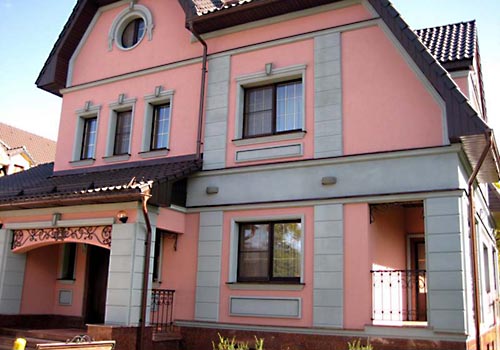
- acrylic. Designed for finishing concrete and brick facades. Acrylic is resistant to environmental influences, mechanical pressure, safe and elastic, which greatly facilitates the process of decorating;
- mineral. The composition of such plaster includes polymer additives and cement. Used for finishing brick houses. Raw materials allow you to get a quality result with minimal time and effort. In addition, the unique properties of this material make it possible to remove excess moisture from inside the facade;
- silicone. Expensive pleasure, characterized by high elasticity, impeccable adhesion, vapor permeability, resistance to fading, chemical and UV exposure. Assumes the use of a silicone primer.
Facing stone
Chosen by those who appreciate the quality of the "premium" class. Natural beauty and perfect shape allow this material to be used without pre-treatment. Possessing remarkable decorative data, the facing stone gives the building a chic look, suggests well-being and prosperity.
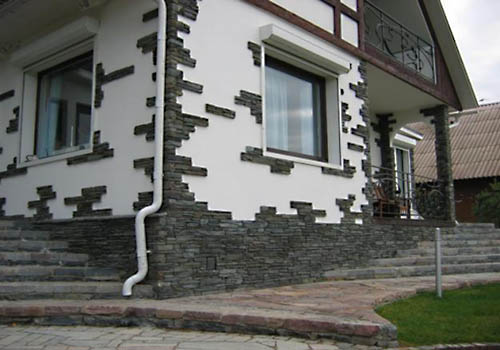
According to the criterion of resistance to the effects of the natural environment, specialists distinguish 3 groups:
- hard rocks (gabbro, granite, siltstone, quartzite);
- rocks of medium density (sandstone, marble, dolomite, limestone, travertine);
- rocks of low hardness (calcareous tuff, gypsum).
There is another classification - according to the method of processing:
- wild stone (unedged, "torn", raw, flagstone);
- sawn ( facing tiles, bar, polished stone).
Finishing a country house inside
Interior decoration country house is no less diverse. There are a myriad of options and the choice will be limited only by your preferences and financial capabilities.
Drywall
Gypsum boards can be of 2 types - dry plaster and gypsum fiber board (GVL). Dry plaster consists of gypsum covered with cardboard on both sides. A foaming agent is added to increase porosity. This helps to reduce the mass of the material and thermal conductivity. It can be used when finishing ceilings and walls of a country house.
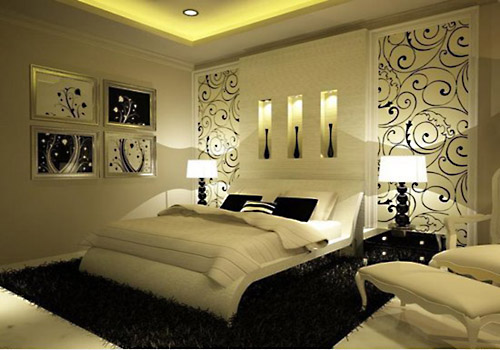
GVL is gypsum reinforced with reinforced fiber and pressed with cellulose fibers. The result is a solid plate into which screws can be screwed, nails hammered and machined without fear. GVL is not afraid of moisture, which means it will become an indispensable tool for finishing the bathroom, kitchen, basement of the cottage.
Plywood
Many familiar material that should not be written off - it is easy to work with it and it is easy to acquire it. The fibreboard consists of several layers and can be both simply moisture resistant and increased moisture resistance.
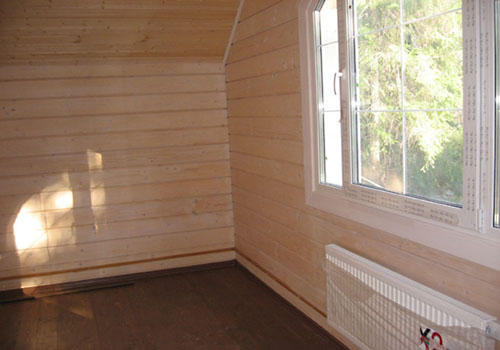
The walls sheathed with plywood "breathe" and create a healthy microclimate in the room. High thermal insulation properties will make the country house warmer, and sound-proof qualities will be appreciated by those who crave peace and tranquility. Plywood can be stained, varnished, covered with wallpaper, painted ... In a word, you can use any way to create comfort and coziness.
Plastic panels
Used for interior decoration of country cottages more and more often. Available in 2 varieties: laminated and with photo printing. The former will appeal to conservatives who are not accustomed to bright innovations, while the latter will delight connoisseurs of unusual solutions who are ready to decorate their living space with original drawings and geometric abstraction.
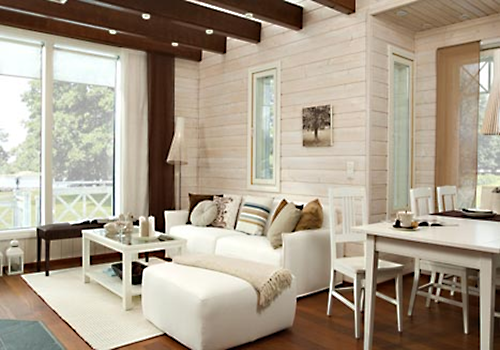
Advantages of PVC panels:
- unpretentiousness in care;
- durability;
- fire safety;
- a large selection of colors and textures;
- environmental friendliness;
- ease of installation.
Wallpaper
Wallpaper has been and remains a common way of decorating. Today, this method of decorating is undergoing a rebirth, because the range of wallpapers is so diverse that it is not so easy to choose the right copy. So, what wallpaper do modern consumers choose for interior decoration of a country house?
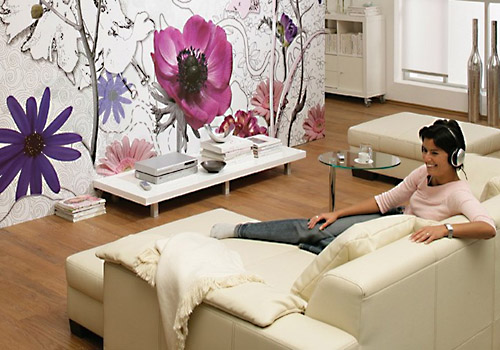
- vinyl;
- liquid;
- fabric (textile);
- metal;
- cullet;
- wallpaper.
In addition to the listed materials, wooden and plastic lining, plaster, blockhouse, natural and artificial stone are used for interior decoration. As you can see, any fantasy can be easily realized. Experiment and create the home of your dreams - a home that will always be comfortable, cozy and warm. A photo selection will help you make a difficult choice.
Interior decoration of a country house: photo
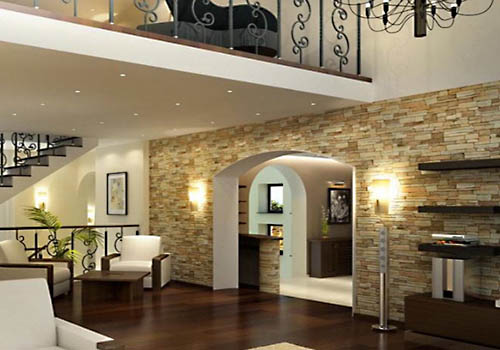
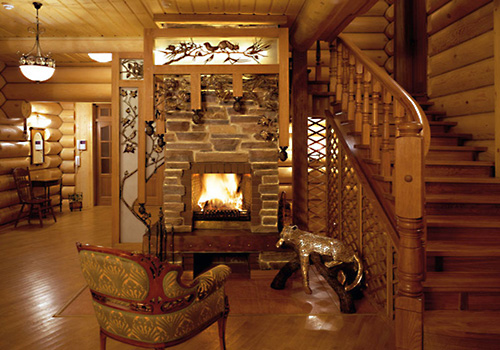
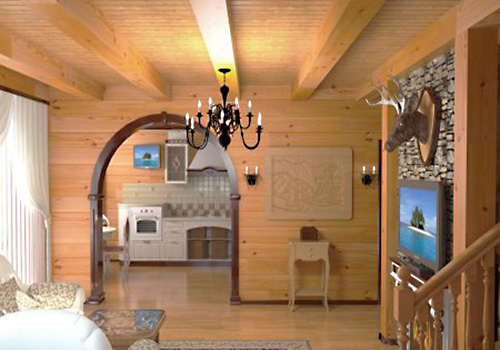
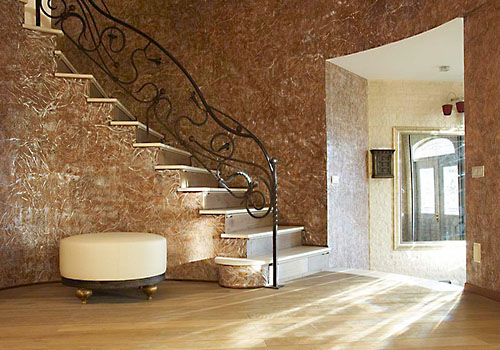
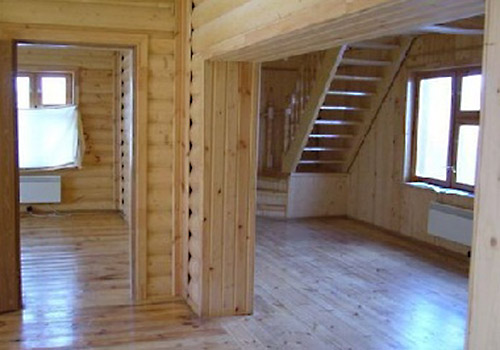
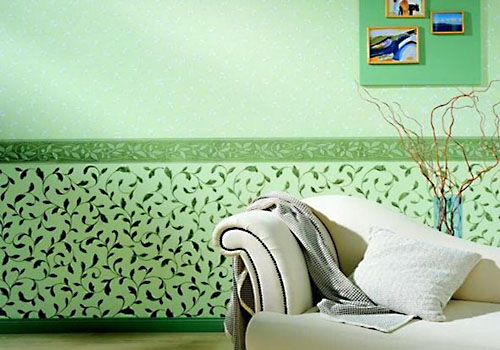
Interior decoration of a country house: video
Note that the block house can be purchased here http://doskov.ru/assortiment/blok-aus. Large assortment, reasonable prices.
2857 0 0
Finishing the cottage: 4 budget ideas 2 times cheaper than usual
In our reality, large investments in the repair of summer cottages look quite unproductive. On the one hand, is it worth spending a lot on furnishing a home in which we spend several months at most? On the other hand, no one cancels the quite reasonable desire for a cozy place in their “country estate”.
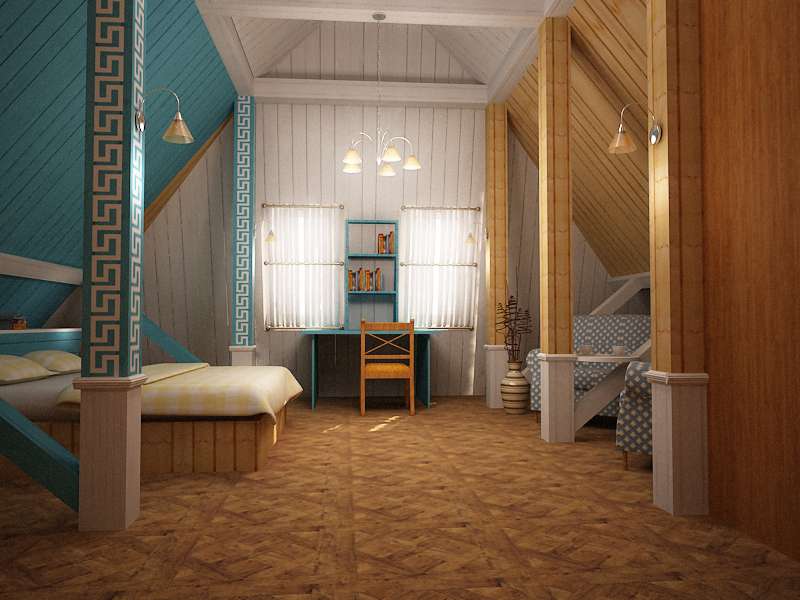
If you are interested in simple materials and budget solutions that can ennoble and decorate your dacha, then this article is definitely for you. In it, I will analyze the main inexpensive ways of wall cladding and share several creative options for creating an original country interior.
Sheathing options
Today, the construction market offers many variations and a variety of materials that are ideal for finishing a country house. Among the rather impressive list, you can pick up something according to the preferences of the owner of the house and his financial capabilities.
clapboard
Clapboard is rightfully considered one of the most sought-after materials used for arranging summer cottages. The advantages of the panels speak for themselves. It:
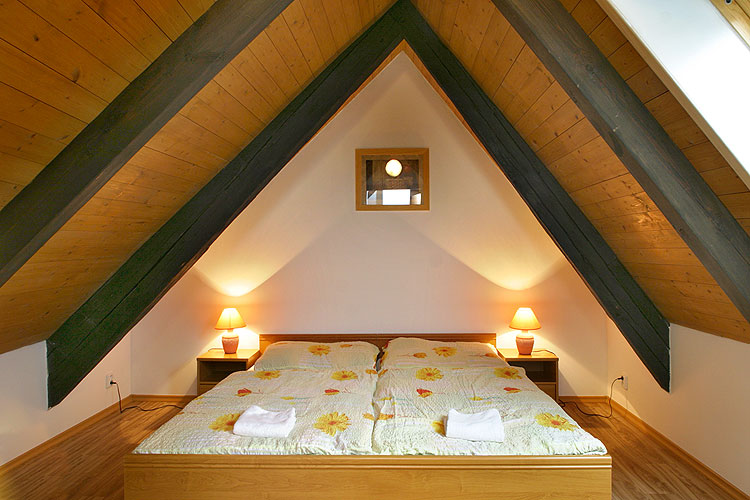
- their pleasant aesthetic appearance, allowing you to imitate a variety of textures;
- affordable cost;
- high thermal insulation performance;
- ease of installation, which can be handled even without much experience in repair work;
- environmental friendliness of the material.
Interior decoration country house clapboard is a great idea for those who value comfort and coziness above all else. By experimenting with textures and shades, owners will have a chance to create an unforgettable interior without spending a fortune.
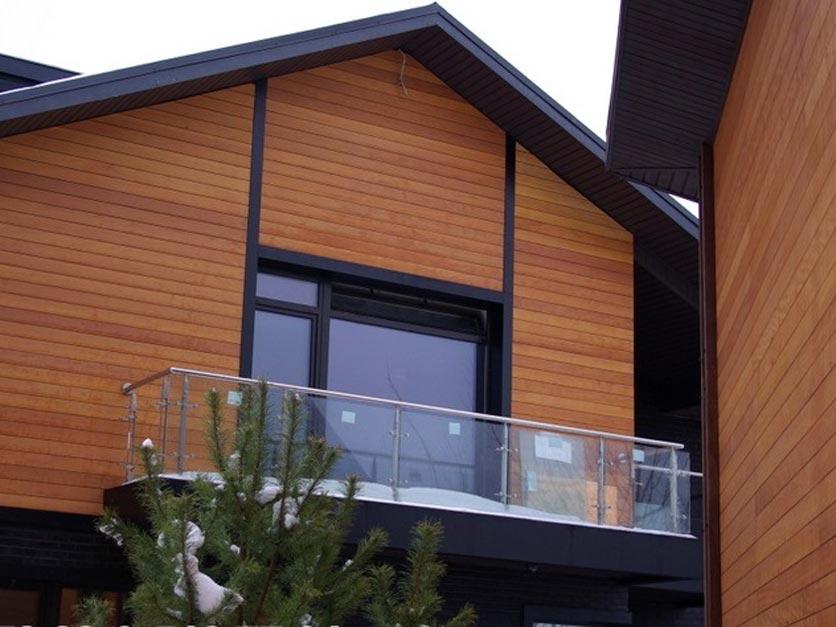
What should be considered during the installation process?
- A high-quality finish is possible only when using a wooden crate as a base.
- If you want to insulate the walls of the house, you can lay in the frame mineral wool, glass wool or polystyrene foam.
- Wooden slats for the base should be fixed either with nails or self-tapping screws.
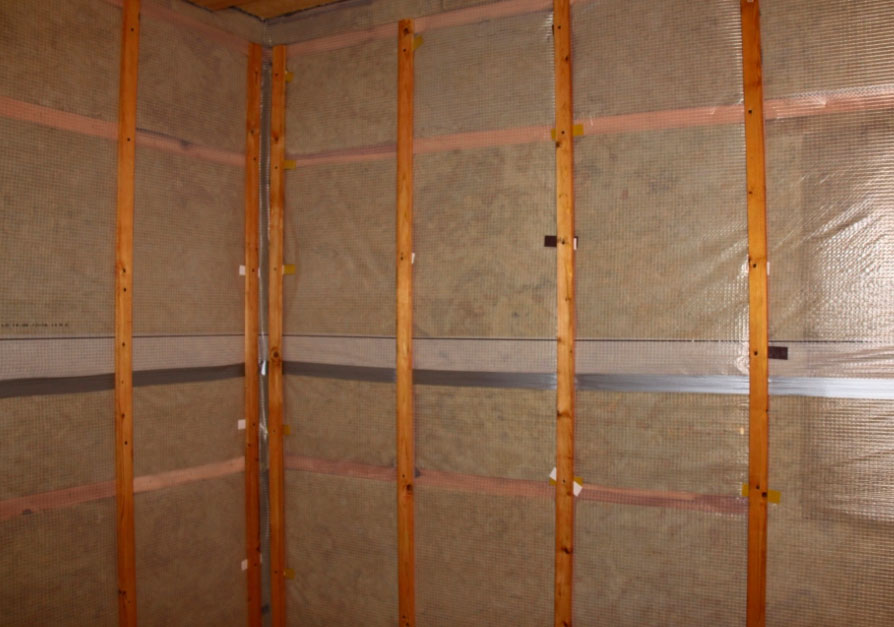
I also want to note that lining can be a very inexpensive and practical answer to the question of how to decorate a change house for a country house.
Drywall
Drywall in popularity is not much inferior to lining. This is a versatile material used both for leveling walls or arranging interior spaces, and for decorating window slopes.
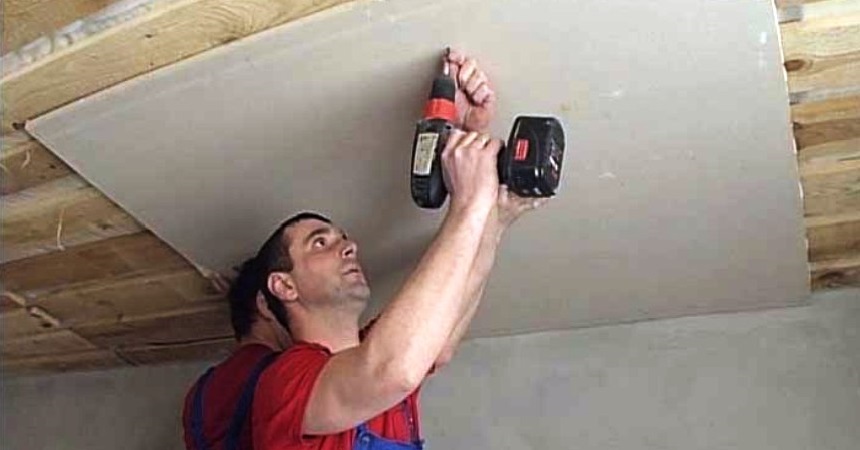
Drywall installation instructions are as follows:
- The first step is to create a frame of metal or wooden slats. They are fixed to the wall with screws or self-tapping screws at a distance of 40-50 cm from each other.
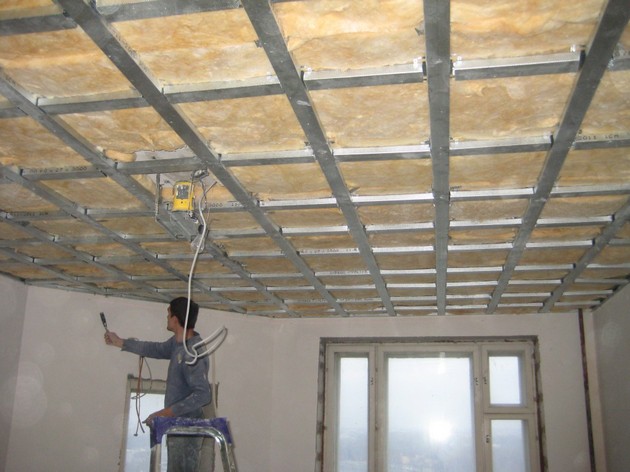
- After that, plasterboard plates are attached to the frame. The joints between the sheets are sealed with putty, then primed.
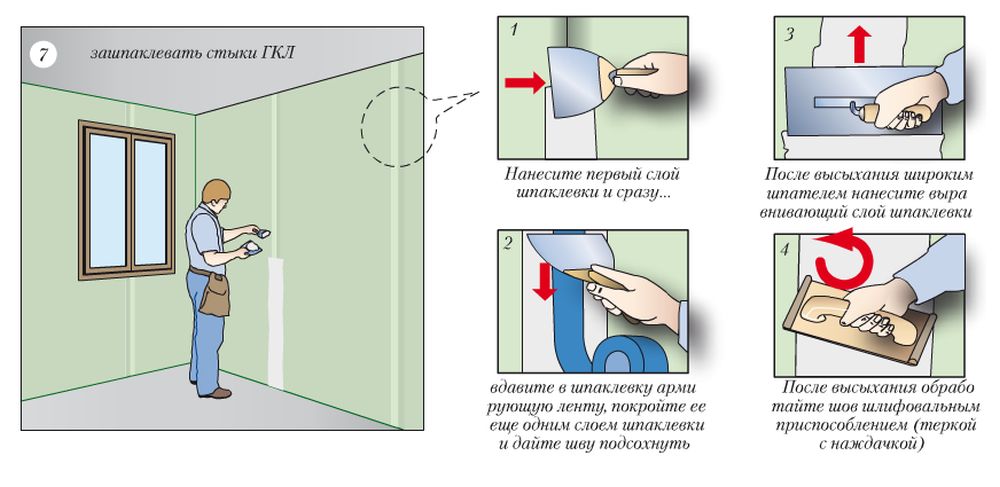
- After about 6-8 hours (that's how much it takes to dry the primer), you can proceed to pasting or painting the walls.
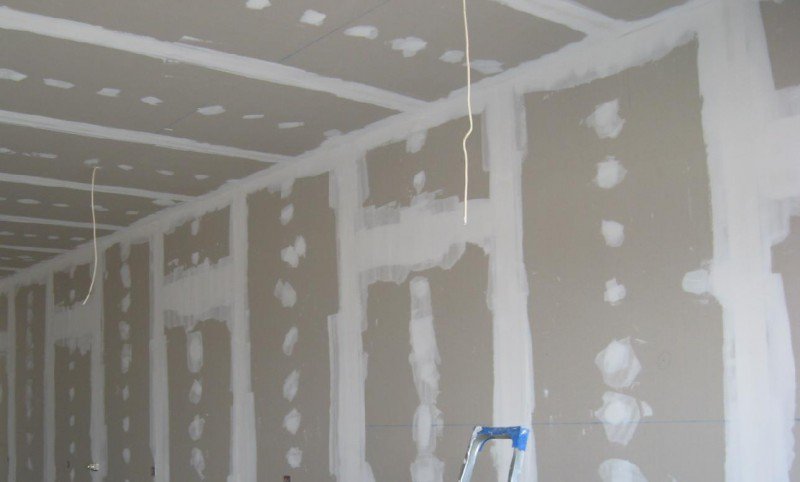
Plywood
That's really what is fully consistent with the well-known phrase "cheap and cheerful." If you are thinking about how to decorate the walls to make it as budget-friendly as possible, then plywood will come in handy. Such material allows the walls to “breathe”, it has good water resistance (so it can be used for lining the bathroom) and sound insulation.
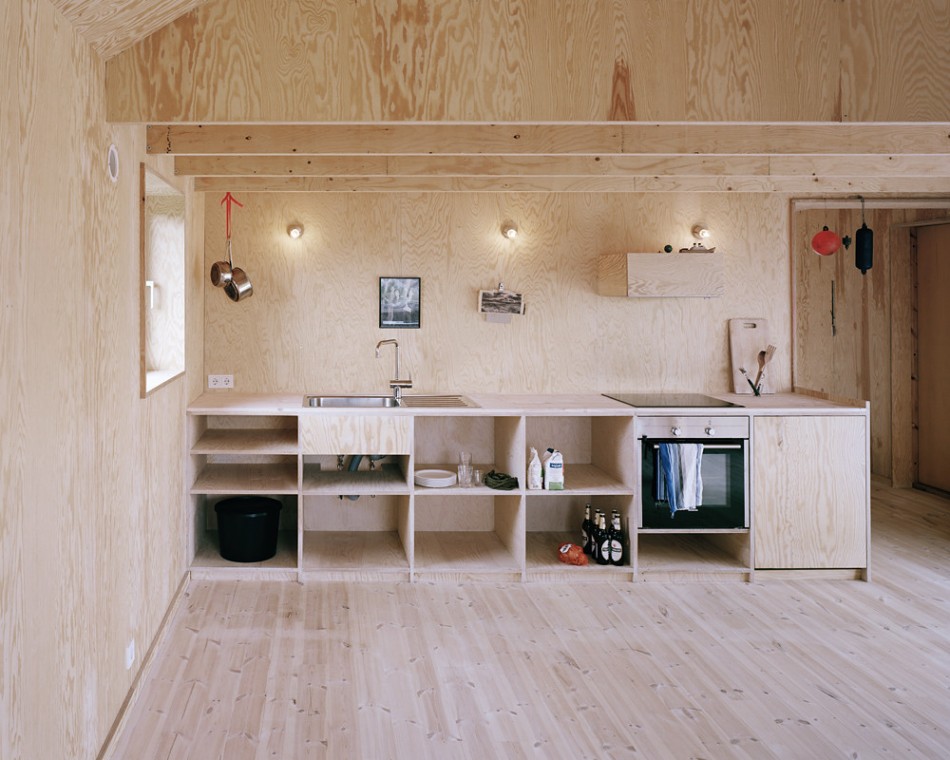
In addition to such impressive advantages, I will attribute easy installation with their own hands, which can be handled by people who have never done repairs before. As a finishing touch, plywood can either be painted with bright paint or wallpapered over.
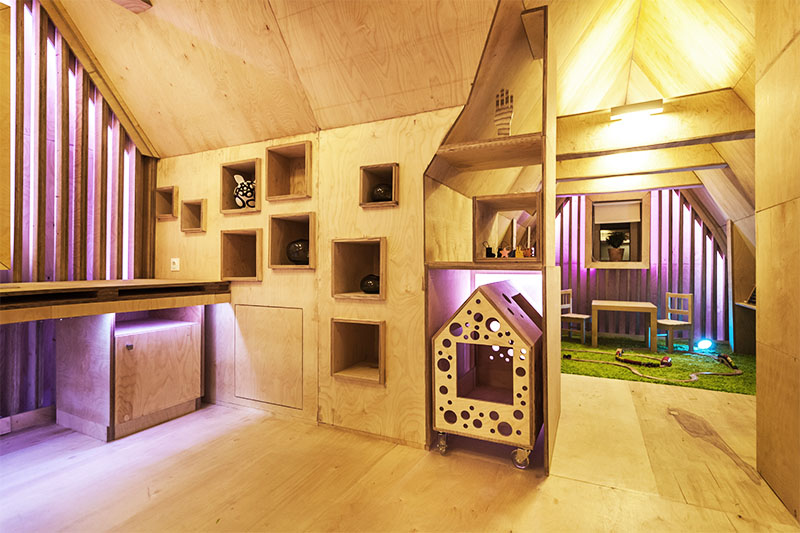
How to combine fantasy with lack of money?
Above, I examined the main finishing materials that accompany inexpensive repairs in the country. They will help to put the house in order, and they will solve the problem with light insulation. But what to do when the soul demands the continuation of the banquet and wants something beautiful in a small country house?
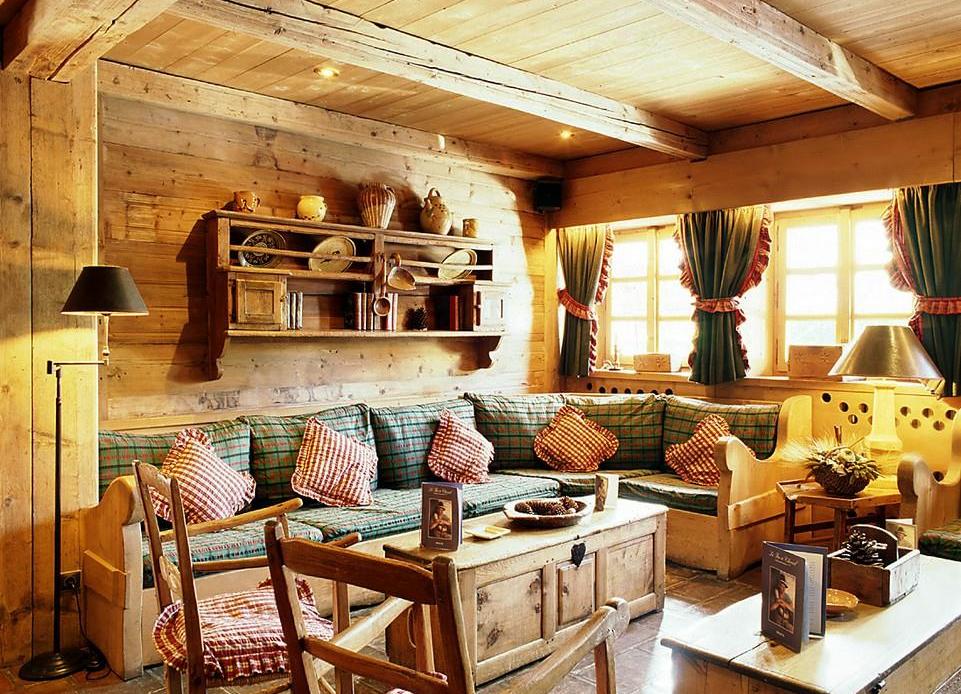
I will tell you how interesting it is to decorate a country house, while spending a minimum of money.
Idea 1. The whole world in colors
Considering the most popular options for decorating a room, it's hard not to mention the paint. This is one of the easiest ways to update the interior, which also allows you to experiment with colors and shades, it is in great demand all over the world. What do future painters-artists need to know?
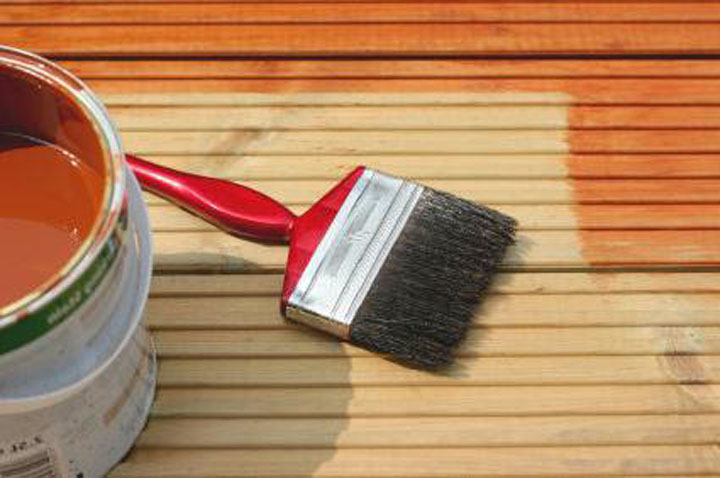
We paint a tree or lining
- If you want to give a rich color to a wooden surface or lining, but leave them interesting texture, get a translucent paint.
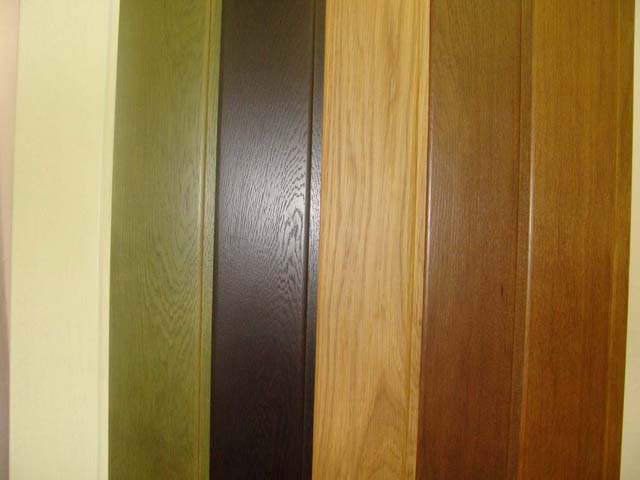
- Exterior finishes should be decorated only with elastic paints that are not afraid of temperature changes (alkyd, oil). Inside the room can be painted with water-dispersed or water-based compositions. It makes sense to use more expensive silicate or silicone paints only in conditions of very high humidity.
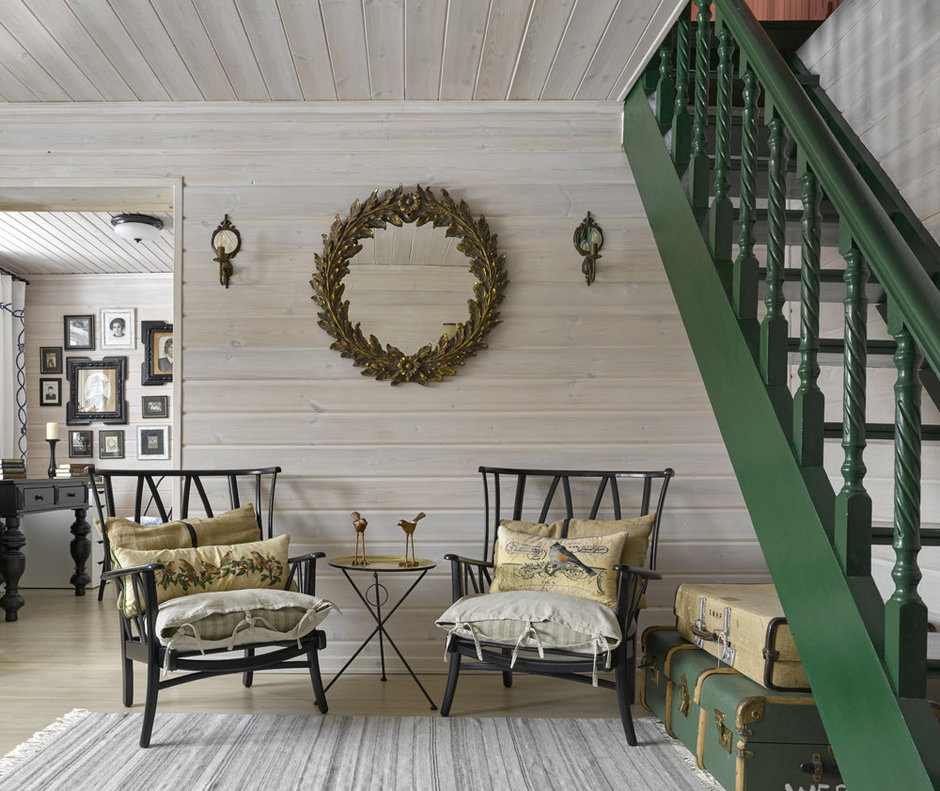
In the photo - an example when the paint only emphasizes the richness of the texture
- Wall decoration inside before painting should be good, thanks to this, paint consumption will be significantly reduced.
- If after the winter there is a strong feeling of dampness in the house, do not rush to wield a brush or roller. To begin with, you should thoroughly dry the room (with a building hair dryer or a heat gun, for example).
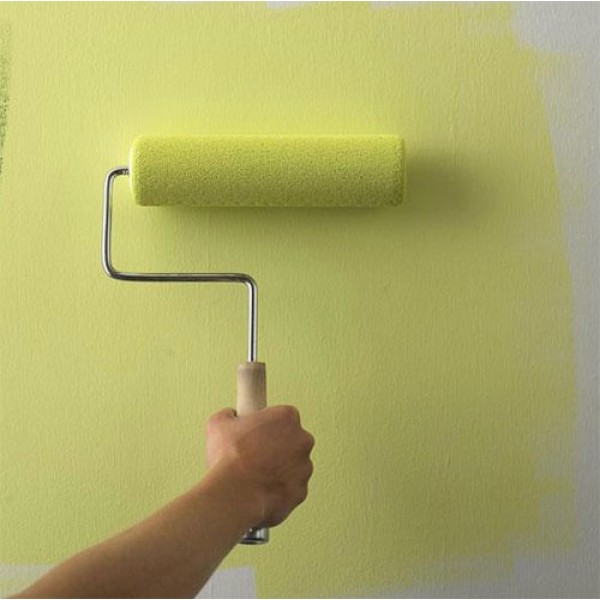
- Definitely do not even try to paint over places where foci of rot and mold are firmly entrenched.. Believe me, after the repair work, the fungus will simply continue to destroy the coating. So first get rid of the mold, dry the surface, sand it with sandpaper, treat it with an antiseptic and only then paint it.
Save yourself a little time and do everything as required. Believe me, the result will be worth it.
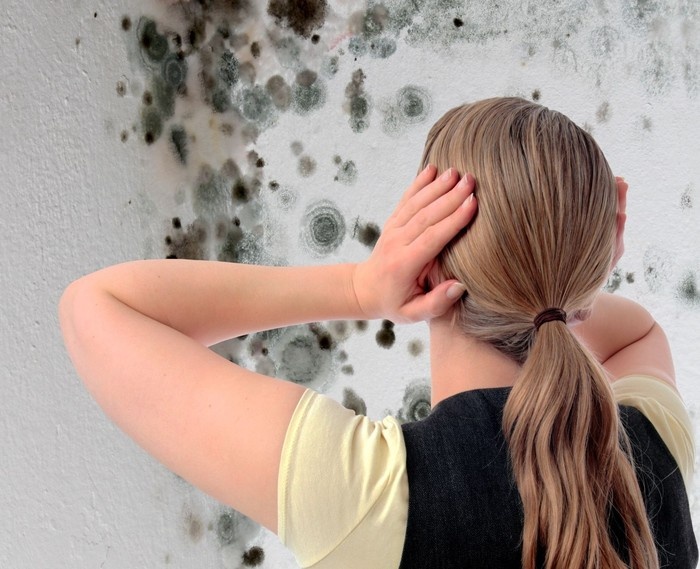
We paint plaster or drywall
To give plastered or plasterboard walls a more sophisticated look, you can use acrylic water-based paint.
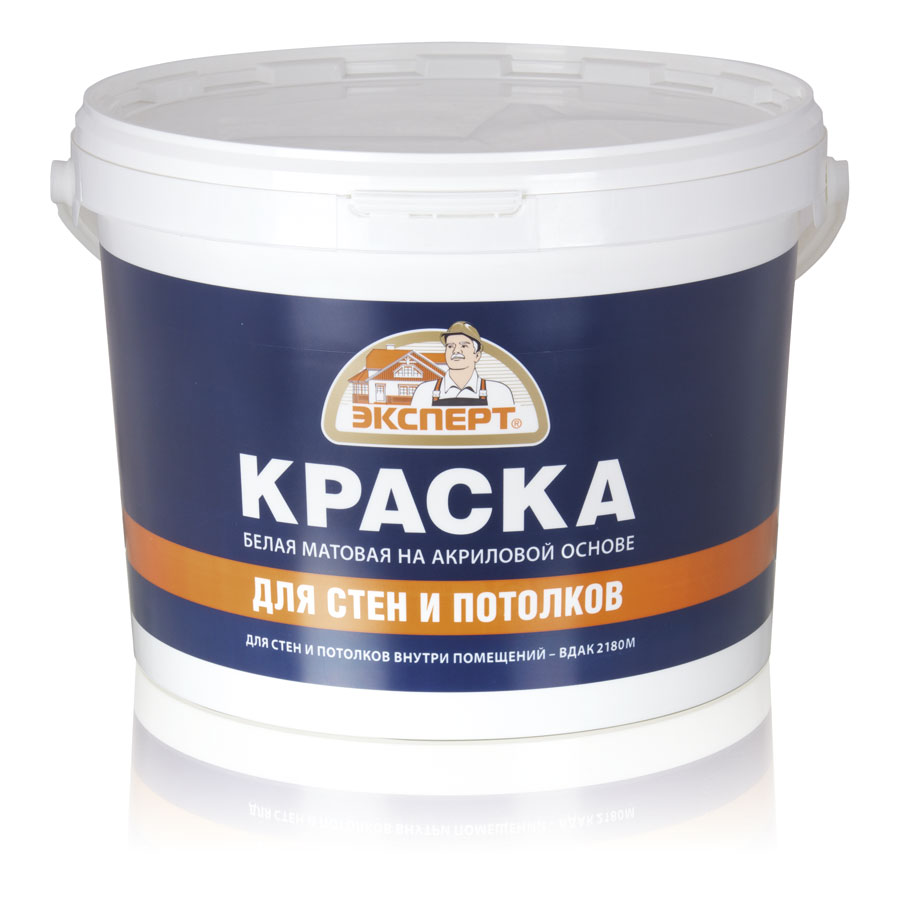
- For better adhesion of paint to the surface, do not spare the primer. In extreme cases (but only in the most extreme), you can use a soapy solution instead, which needs to remove grease and dust from the walls. But still, try to get a primer - with it the result will be more effective and reliable.
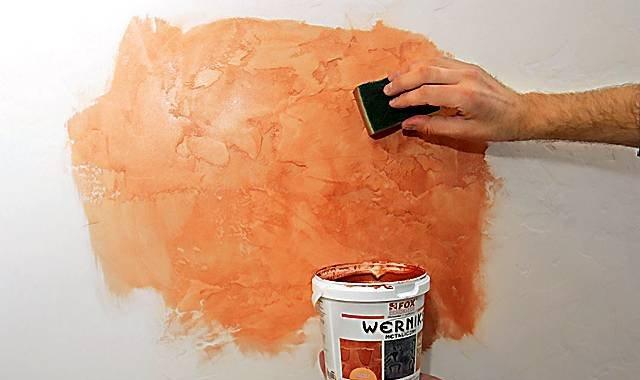
- If there are small cracks on the surface and there is no plaster, it is worth resorting to the help of paint with a latex filler. It can hide cracks up to 2 mm in size.
- Do not be afraid of the most "impractical" color in the interior - white. Firstly, white paint is the cheapest, and secondly, any object will look bright and stylish on a light background. In addition, it will contribute to the visual increase in the room.
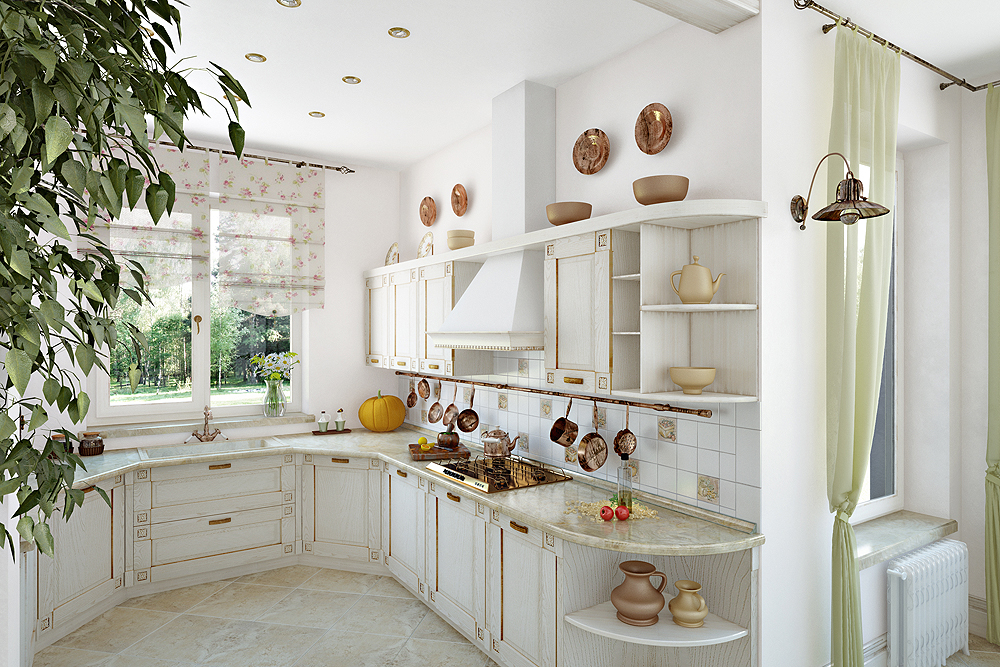
Idea 2. Wallpaper to be or not to be?
Wallpaper in the country is not only not uncommon, but the most popular type of decor. How to deal with them in the process of repair? I'll consider two possible options:
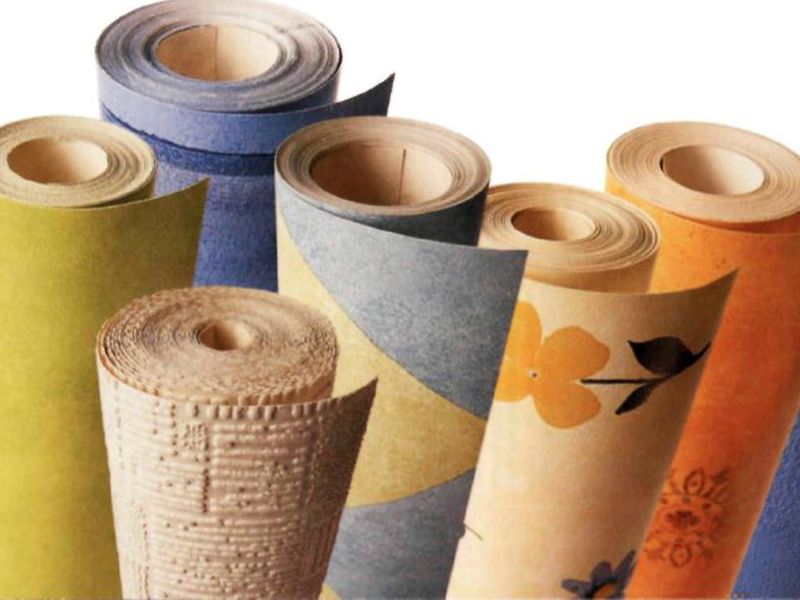
- When the old wallpaper began to peel off a little - do not rush to tear them off (unless you definitely decided to change the situation). If they peel off in whole canvases, then there is nothing to do, and you will have to remove everything and glue new ones. In the case when the canvas peels off only at the joints and in the corners, it is better to just carefully glue everything.
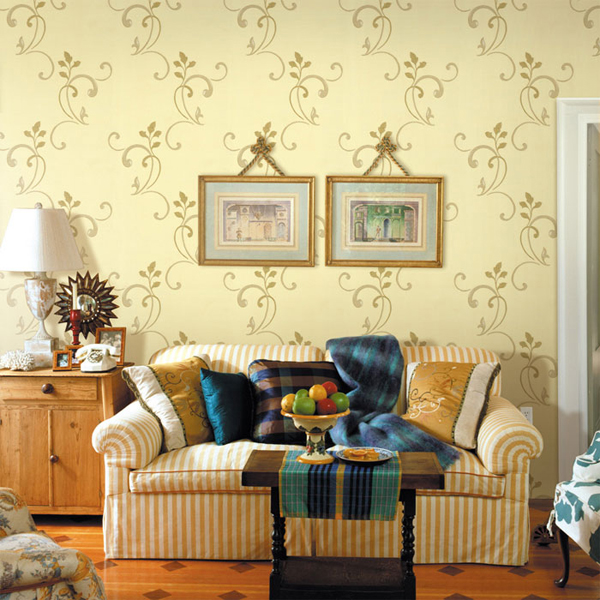
To keep the canvas stronger, add ordinary PVA glue to the wallpaper glue (in a ratio of 1 to 6).
- You have long decided to change the annoying pattern, only in some areas the wallpaper stuck as if tightly. Through a piece of wet fabric, run an iron over them, so the material will be easier to remove.
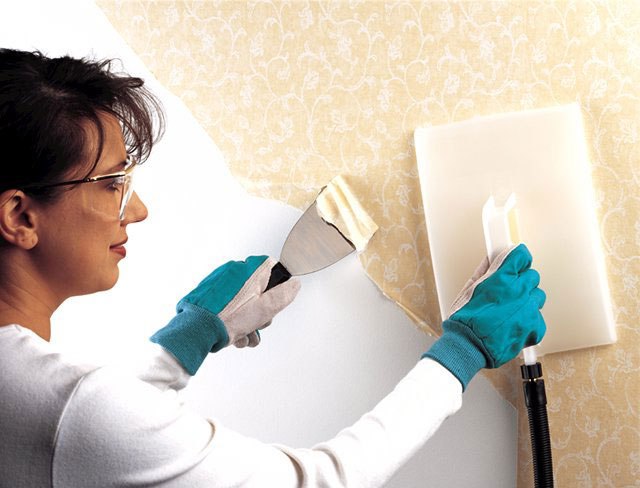
For those who are thinking about wallpapering in country house Here are a few tricks to help you save money:
- look in the pantry for the wallpaper left over from the last repair (some trimmings will definitely remain), ask relatives and friends about the same. As a result, you will be able to collect material for original decor in patchwork style. Paste the wall in the room with scraps with different patterns and enjoy the unusual result;
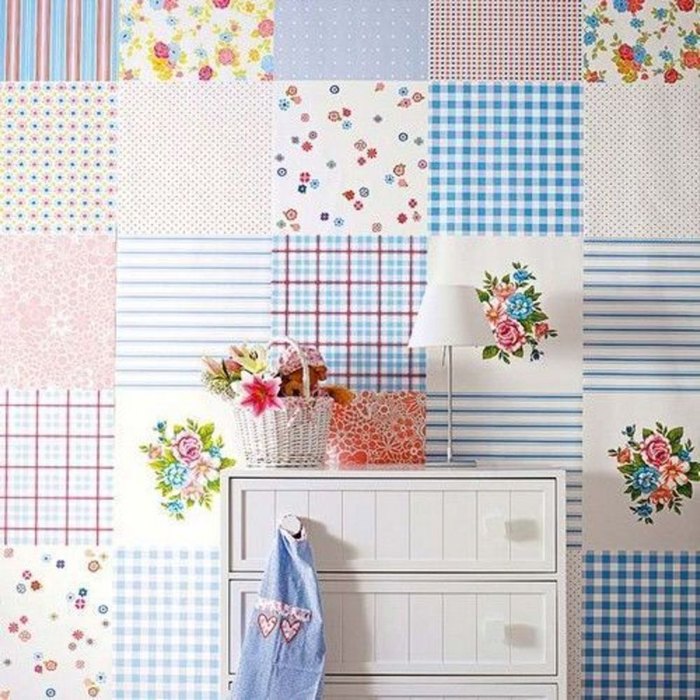
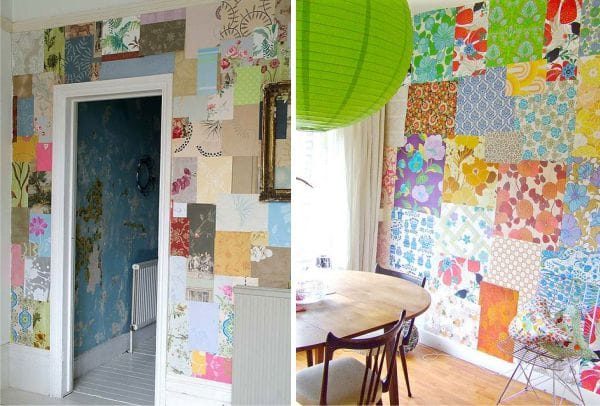
Thus, you can decorate only one wall, otherwise it will come out too colorful. For others, painting or wallpaper in neutral shades is fine.
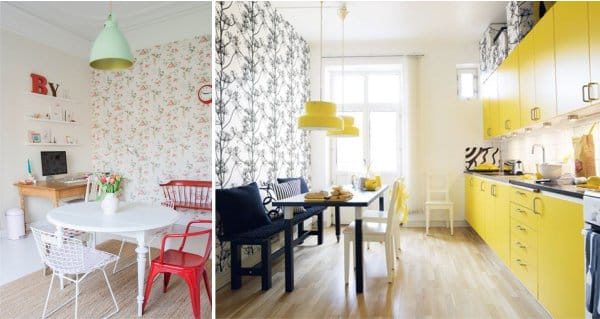
- most often in specialized stores you can find baskets with the so-called "sale" wallpaper left over from unsold collections of one or two rolls. The price of their much standard range, you just have to pick up and combine several models in color and texture;
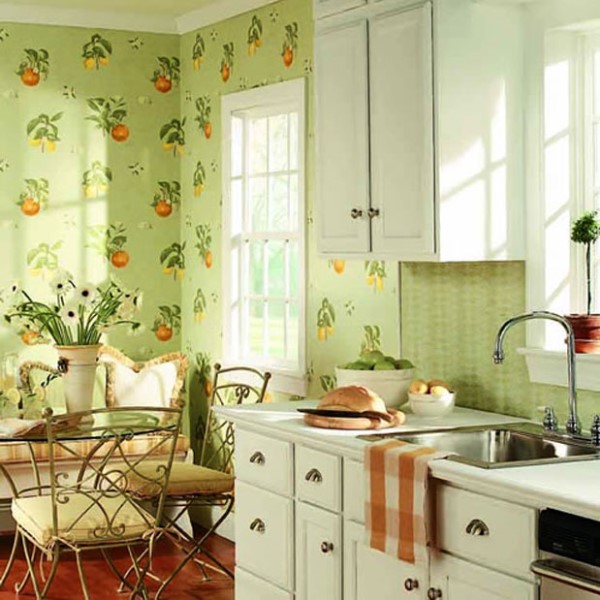
- interior decoration of a country house is primarily associated with the cheapest paper wallpaper. Well, for one or two seasons, they will fit the wave. After the allotted time, their appearance will be far from the original.
I would still advise you to resort to the help of two-layer paper wallpapers - the difference in price is not so noticeable, but they last longer.
To save money, do not choose wallpaper with a large pattern. Due to the fact that you have to adjust the details of the picture, there will be more waste. The ideal option is a small abstract pattern.
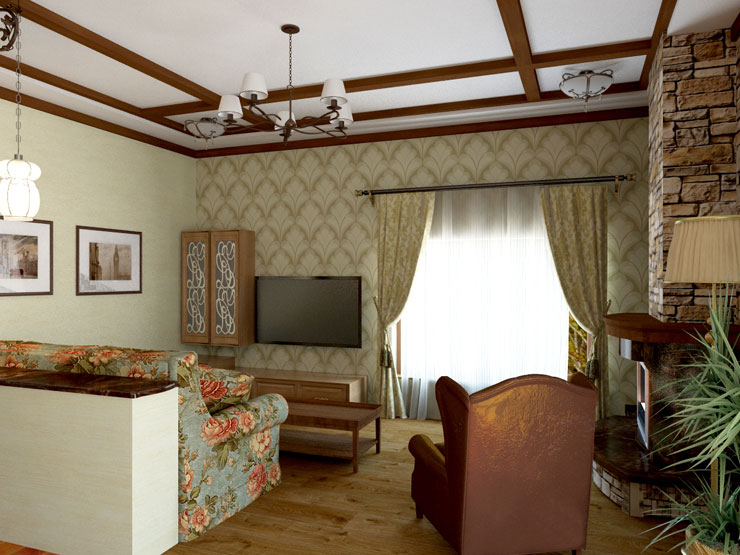
Idea 3. Not Italian, but still tiles
Tile is another worthy material for budget repairs. I'm not talking about Italian ceramics, there are many cheaper examples in stores. Again, you have at least 2 options:
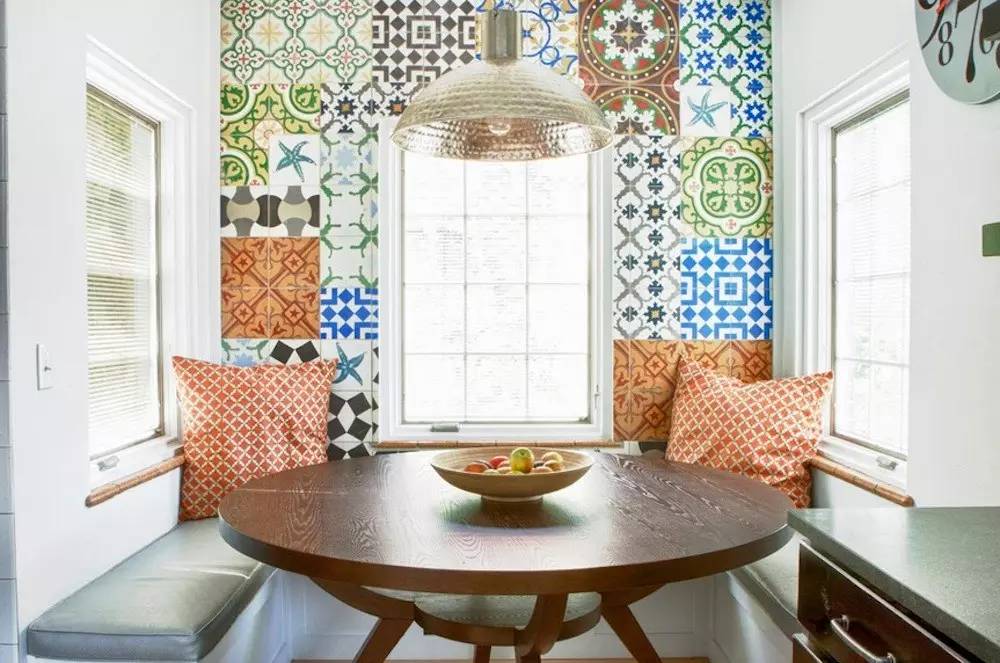
- buy required amount tiles and finish it with a kitchen or even a summer shower inside;
- again, scrape through the barrel and decorate the selected surface in the patchwork style from the remains found.
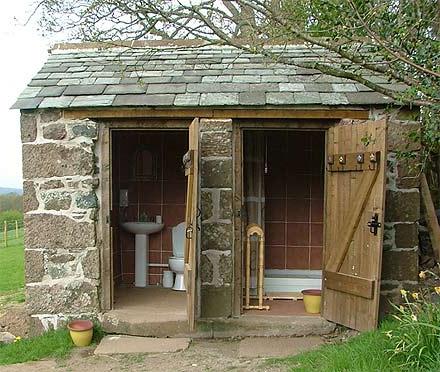
Idea 4. Reminder from the past - wall newspaper
An even cheaper replacement for wallpaper can be (so you think) ordinary newspaper strips. Glue them like a regular paper coating, and open them with varnish on top. The main advantage of this option is that over time it will look even more interesting and atmospheric.
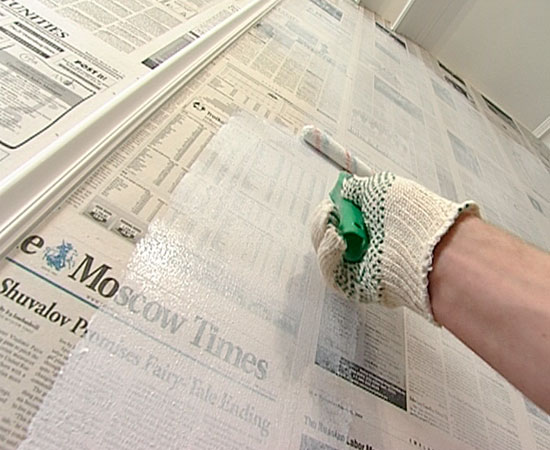
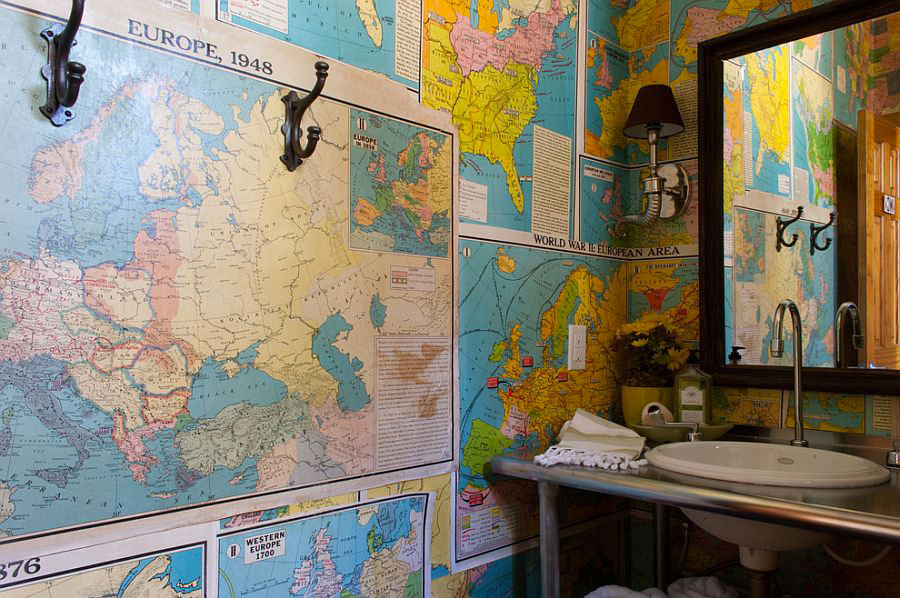
By the same principle, you can use the old geographic Maps or book pages (however, I do not approve of the second option).
Additional Options
If you think that I have finished listing all sorts of inexpensive ways to design a summer residence, then you are mistaken. I have a few more interesting ideas left in my head:
- Perforated convenience. A couple of perforated metal sheets are a great way to convenient storage frying pans and knives in the country. If at the same time they also close the bumps on the wall, so much the better.
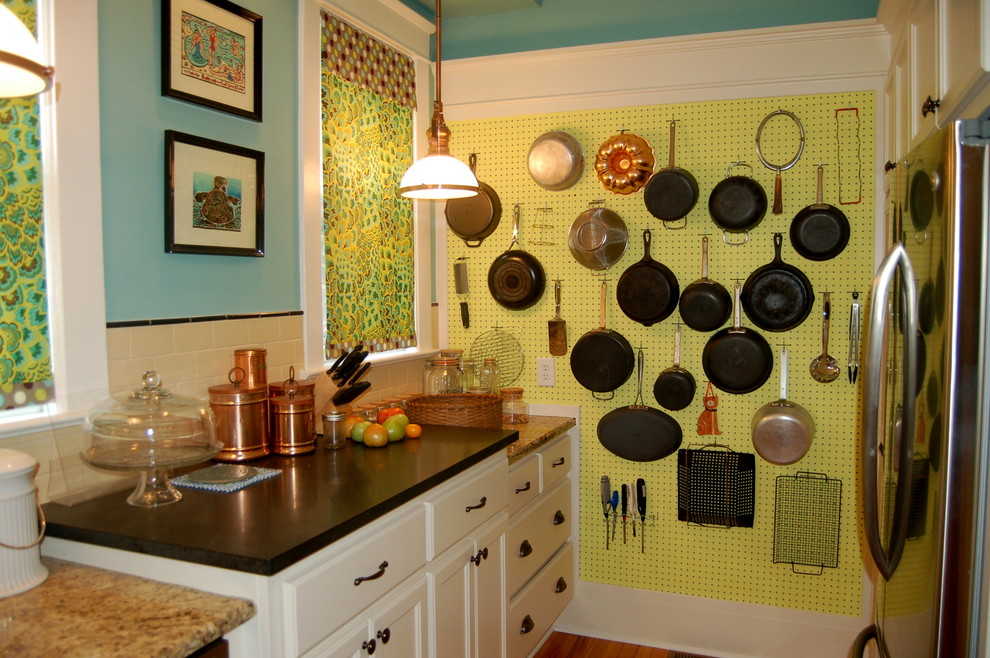
- We don't throw away boxes. A few old drawers attached to the wall can create a fairly roomy and comfortable shelving unit. Both practical and useful for decoration!
- Nowhere without textiles. Another simplest way hide flaws in wall decoration - cover it with a large panel of beautiful fabric, felt or cork roll (depending on what you find in the pantry).
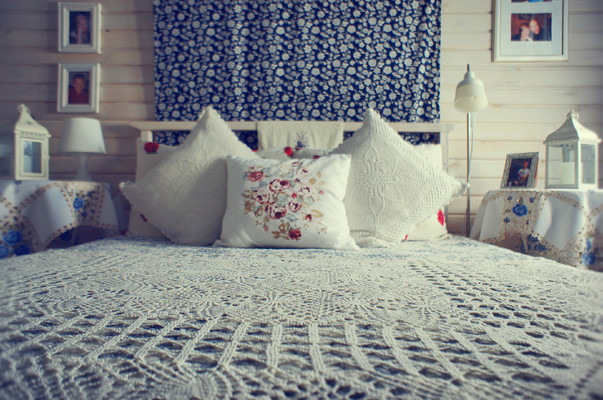
I have tried to select for you the most interesting and inexpensive options for arranging a summer house, even more ideas are contained in the video in this article.
Afterword
If you have a crisis of ideas, and you don’t know how to decorate the walls in the country, then I hope my article will be useful to you. I gave an example of the main finishing materials used to equip a country house, and suggested several ways to decorate it.
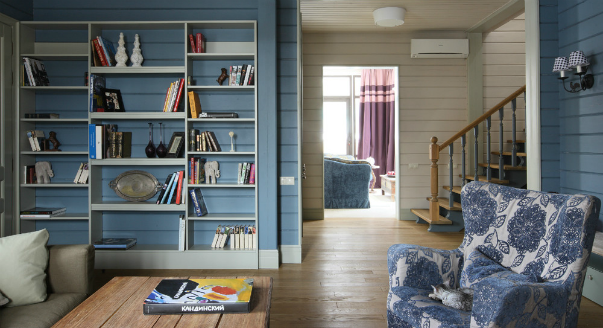
If suddenly you still have some questions for me, I will be glad to answer them in the comments. In the same place, share your impressions of the above finishes and express your opinion.
Have you ever dealt with PVC plastic panels? If so, then you probably understand how easy it is to work with this material. So, siding, in fact, is the same panels, only they have a slightly modified look - if the first can be called universal and they can be installed on any surface and in any direction, then the siding is designed exclusively for the facade and is mounted strictly horizontally, from which all the features of its installation follow. In general, you won’t have to do anything difficult and high-tech - you can easily cope on your own, especially if you ask in advance about the siding installation technique.?
Sheathing a country house with siding photo
Sheathe the cottage with siding: a few words about the arrangement of such facades
Siding is one of the types of ventilated facade, the main advantage of which is the ability of the walls to breathe. This opportunity comes from the gap between the existing walls and the siding sheathing. This is the first thing to understand when studying the question of how to sheathe a cottage with siding with your own hands - you can’t violate this ventilation in any way. Such an attitude to business will result in a disastrous result, or to be more precise, the walls will begin to become covered with fungus and mold.
The second point that you need to understand about the construction of ventilated siding facades is that the same ventilation gap makes it possible to insulate the building. But this must be done competently, since the result, again, can become disastrous. Here it is very important to follow the correct technology of thermal insulation at home - to create the right cake from various materials. Insulation, installed behind a ventilated facade, should be placed between two barrier films - a vapor barrier is placed closer to the wall, and a wind protection is outside. Mineral insulation in such a shell will be reliably protected from moisture and will never lose its abilities.
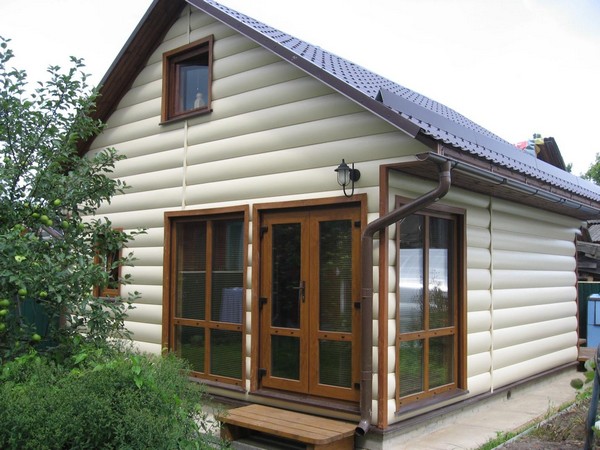
How to sheathe a cottage with siding yourself photo
And that is not all. An important point, as mentioned above, is the ventilation gap between the siding and the insulation, or rather the windproof film. In most cases, it is not done, explaining that the curved structure of the siding itself provides ventilation, but in some way this is wrong. A small gap between the insulation and the siding is needed - it will never be superfluous, since high-quality ventilation removes unnecessary moisture from the sheathing. How to sheathe a country house with siding, you can see in this video.
In general, everything. These are the most important points which would be reckless to ignore. Let's move on and deal with the frame.
Facing a country house with siding: a frame and everything connected with it
The frame for the siding is, so to speak, most of the work. Moreover, it is the most difficult and the final result depends on it. It is the frame that makes the walls even and it is he who forms the plane for sheathing. It can be made from two types of materials - if the walls of the building are fairly even, then you can use a wooden beam, stuffing it onto the surface with dowels. If we are talking about the alignment of the walls along the way, then you can’t imagine anything better than metal profiles for drywall. The only thing you need to pay attention to here is the quality of the profile - it is better not to use profiles made of too thin iron. Still, this is a street, and moisture will affect the metal. In general, there are special profiles for the street that have a protective coating - this would be ideal.
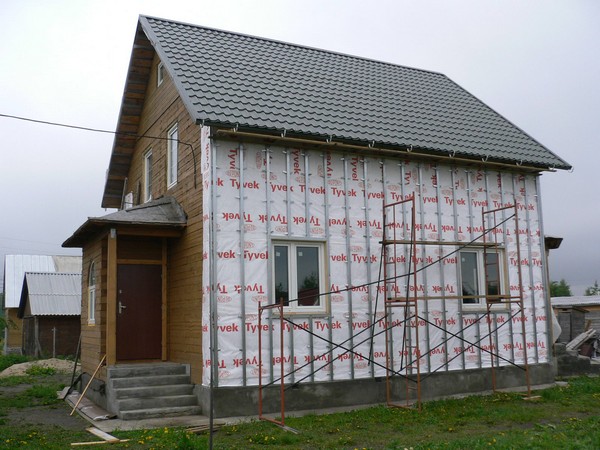
Facing a country house with siding photo
Now for the frame assembly. Sheathing with siding is performed (or rather, the construction of a frame for it) is as follows.
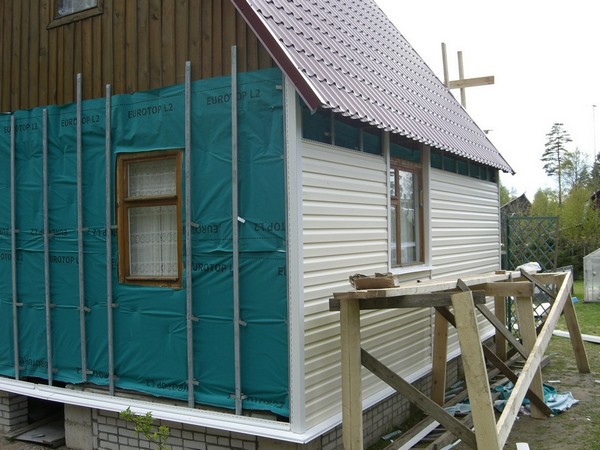
Now the only thing left is to form slopes. An L-corner is attached around the perimeter of the window and a pair of horizontal jumpers is additionally added above and below the window. The lower jumper is needed to install the ebbs (they are mounted immediately, before the frame is sheathed with siding), and the upper one is to form the upper slope.
Finishing the cottage with siding: installing panels and process features
As mentioned above, finishing the siding of a country house with your own hands, or rather, sheathing an already finished frame, is a simple matter - we can safely say that all other difficulties are already behind us and only an exciting activity lies ahead. Be that as it may, it is still too early to relax, and this work has its own subtleties. To better understand them, consider the technology of attaching siding to the frame in more detail.
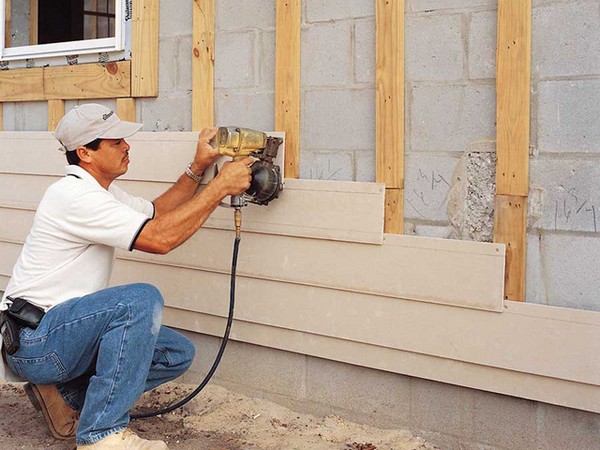
In principle, these are all the subtleties of installing siding panels - in this way, the whole is sheathed almost to the very top. Above under the roof, just like below, a starting strip is mounted, with which you will have to suffer a little - those who are familiar with this nuance prefer not to install it at all in this place. The unsightly cut top is simply covered by the filing of the roof overhang.
And in conclusion, the topic of how to sheathe the cottage with siding, it remains to add only one thing - in particular, to say a few words about the insulation. It is produced as follows. First, a vapor barrier is pulled over the frame - it is pulled so that there is sagging between the profiles. Usually everything is done along the way - the vapor barrier is attached along the corner and then along each next profile, after installing the insulation. Then all this ingenuous construction is covered with a windproof film - it is already fixed with a 20mm thick wooden lath. It is this rail that provides the ventilation gap between the siding and the insulation. The siding itself is subsequently attached to it. If the insulation is made with foam, then all these barriers and slats are simply not needed.
When the walls of a private house are built from foam blocks, aerated concrete and other similar materials, they must be additionally lined both inside and outside. Traditional brick facades with modern cladding also look much better, to say nothing of frame buildings, where it is simply indispensable. The purpose of this article is to tell you how to sheathe a house from the side of the street, so that it turns out cheap and beautiful at the same time.
What materials are available
First, let's list the common ways. exterior finish walls, and then we highlight options that will cost relatively inexpensively:
- smooth or textured plaster with and without insulation;
- vinyl or metal siding, corrugated board;
- decorative elements made of wood - lining, block house and the so-called shingle (boards that form a coating in the form of scales);
- panels made of fiber cement and foam plastic with imitation of brick and other types of facade cladding;
- artificial and natural stone;
- different kinds sheathing bricks - torn, figured, bassoon and so on.
Sheathe the walls of the house artificial stone- not the cheapest option
If you choose the right colors and sheathe the walls in any of the following ways, then your Vacation home it will look beautiful, but it is not a fact that the work will be cheap. It is not difficult to make sure of this: find out how much it costs in your city to finish the facades with stone or overlay with clinker bricks. Since we are interested in inexpensive finishes, we will not consider the last two.
A little about how it is better to sheathe different types of buildings. If any house can be upholstered with siding, wood and various panels, then wet-applied external plaster or fur coat is not suitable for wooden walls of timber and log dwellings. Plastering is appropriate to do in cottages made of stone, slabs and blocks, and even in old adobe houses. You can get more visual information about the methods of cladding private houses by watching the video:
An important point. The technology for performing work depends on the type of cladding chosen. Here the rule applies: water vapor moving from the thickness of the fence structure to the street should not meet obstacles on the way, otherwise it will condense, causing the wall to get wet and, as a result, a fungus will form.
Since wood, plaster and fiber cement do not impede the passage of moisture (it has good vapor permeability), products made from these materials can be attached directly to the walls. Another thing is upholstery with panels made of plastic or metal, which absolutely does not allow water vapor to pass through. In order for it to freely go outside, such a sheathing is mounted using a new technology - on a wooden or steel frame - a subsystem. The latter provides a ventilation gap (air) between the structure and the cladding.
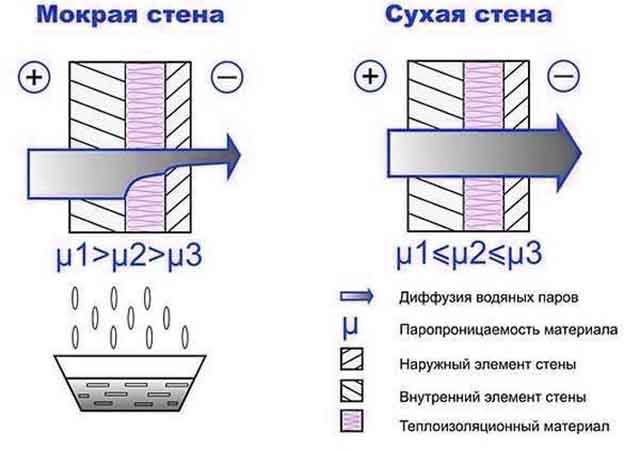
So that the structure is not saturated with moisture, all its layers must be permeable to steam.
Note. The same rule applies to heaters. Vapor-permeable mineral wool is mounted directly to the surface of the structure, while foam and foam plastic require a small air opening. Therefore, polymer plates are not covered with a continuous adhesive mixture, as shown in the photo.
Exterior wall plastering
The technology for applying smooth plaster has remained unchanged for decades. Self-made or factory beacons in the form of planks are installed on a leveled base, after which the first layer of the building mixture is applied and stretched by the rule. The second layer is a grout, which is made smooth or textured using various tools - graters, figured rollers and stamps.
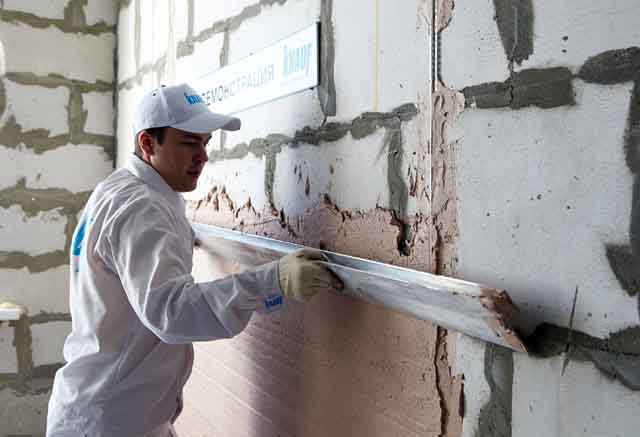
Reference. The most popular type of plaster is the bark beetle shown in the photo. The grooves, resembling wormholes, are made due to the round fractions present in the solution, stretched by straight or circular movements of the grater. How to do it right, look at the video:
After the solution has hardened, the surface is painted with an acrylic, silicate or silicone composition, depending on the base used. plaster mixture. A more progressive, but also expensive option is the application of tinted plaster, which does not need to be painted during the entire service life.
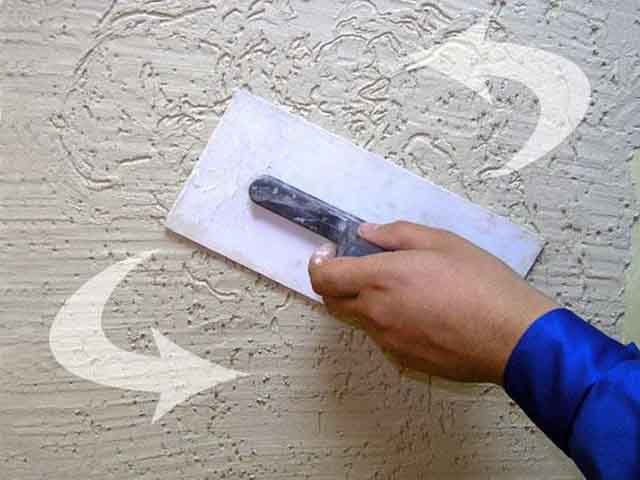
If the wall must be sheathed with insulation before facing, then the work is carried out in the following order:
- The base is impregnated with a primer, after which foam plastic or mineral wool boards are glued to it. A day later, the insulation is additionally attached to the wall with dowels in the form of umbrellas.
- Next, a waterproofing layer is applied from a special construction mixture, where a reinforcing fiberglass mesh is recessed. The canvases are laid vertically and overlap by at least 10 cm.
- After the waterproofing has hardened, it remains to apply a layer of plaster, as described above.
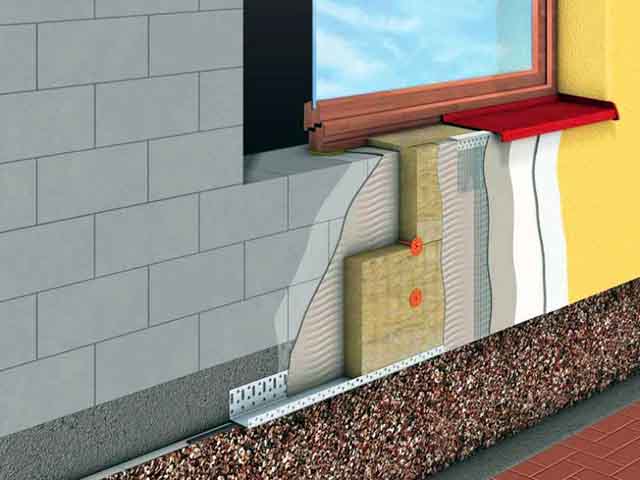
Insulation pie under plaster
Note. Do not use the described technology for sheathing wooden house, because after a while the lining will crack and collapse. The reason lies in the properties of wood - it "breathes" (absorbs and releases moisture), which is why the timber or log changes in size by several millimeters.
Sheathing with siding and corrugated board
The advantages of these materials are a wide range of colors, affordable cost and quick installation without "wet" processes. This type of house decoration outside involves the construction of a frame made of metal profiles or wooden bars (the latter will be cheaper). If the walls are made of aerated concrete and do not need insulation, then the subsystem serves to create a ventilation gap, level the plane and fasten the skin.
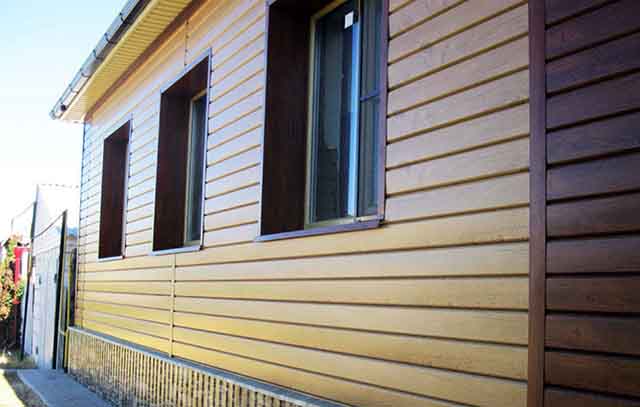
Full cycle finishing works with insulation looks like this:
- Bars or a metal profile of the subsystem are attached to the walls in increments of 0.5-0.6 m (depending on the width of the slab insulation). Between them, a heat-insulating material is laid and a dowel is fixed - with umbrellas.
- The entire surface is covered with sheets of a diffusion membrane that allows moisture to pass only in one direction - from the inside of the "pie" to the outside. It works as a protection against wind and precipitation.
- A counter-lattice is mounted on top, providing a ventilation airflow of 4-6 cm, as shown in the diagram. In the corners, above the plinth and under the roof, additional elements are attached to the subsystem on self-tapping screws - starting, finishing and corner strips.
- Sheets of corrugated board or siding strips are cut to size, taking into account a gap of 6 mm for thermal elongation, after which they are inserted into the grooves of the extensions and screwed with self-tapping screws. The latter should not tightly press the elements to the crate. How to properly sheathe a house with siding is described in detail in.
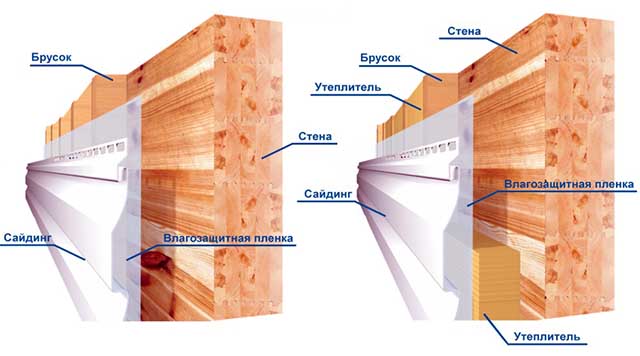
Note. Frame profiles are attached perpendicular to the intended position of the siding or corrugated sheet strips.
Sheathe the walls with metal or plastic panels you can do it yourself, saving money on work. Note that weather conditions (except heavy rain) do not interfere with the construction, and you do not need to wait until the adhesive and waterproofing layer hardens, as is the case with plaster. And the last point: siding is not only affordable and looks beautiful, but it is also well washed from dust with a regular hose.
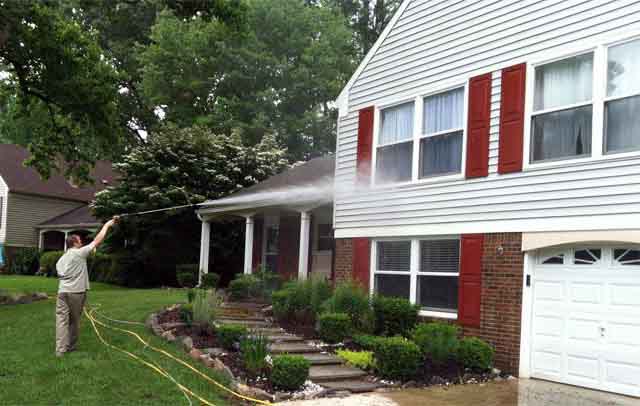
Installation of wooden cladding
The wooden paneling of the house looks nice and stands out for its main advantage - environmental friendliness. However, it requires care - antiseptic treatment during construction and periodic painting during operation. Properly made cladding well passes excess moisture out and “breathes” along with wooden walls.
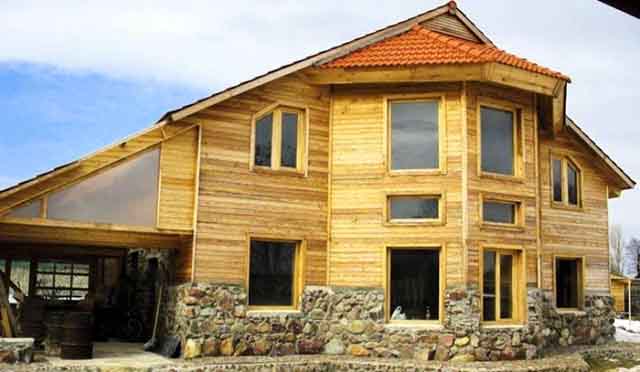
This is how the facades sheathed with clapboard look
Reference. Moisture enters the thickness of the enclosing structures in two ways: from inside the living quarters and as a result of condensation from the occurrence of the dew point. So the internal vapor barrier solves the issue only partially and the water vapor still needs to go outside, and the pores in the wood contribute well to this.
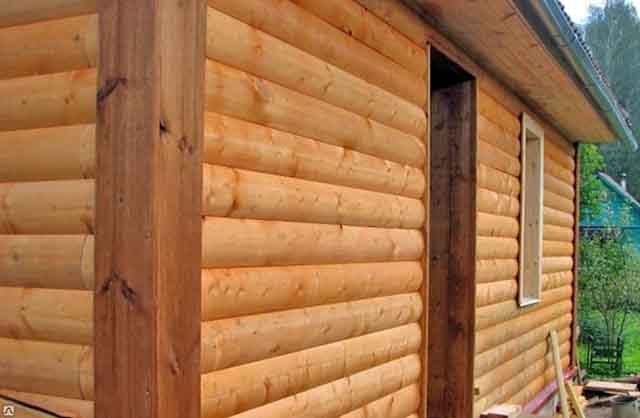
Block house imitates a log building
The choice of finishing method depends on the material from which the building is built. In houses made of SIP panels and those built using frame technology, the lining can be attached directly to OSB sheets, since they are flat and fairly even. In the same way, dwellings made of ordinary and glued beams are sheathed when there is such a need. Another thing is log cabins with an uneven surface, stone and brick houses. Here you can not do without a wooden frame device, as described above.
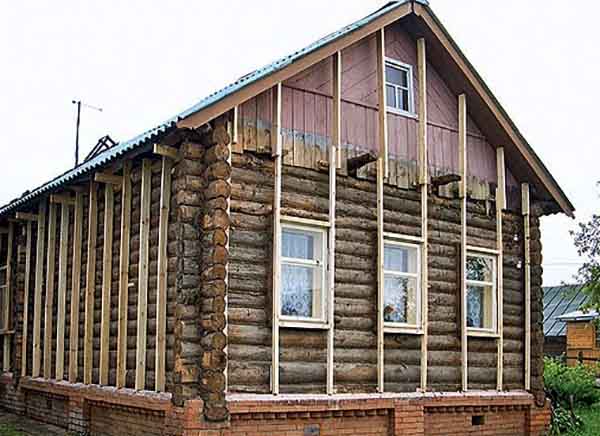
Sheathing with wood products is performed in the following ways:
- Lining and its variety - a block house is installed following the example of siding - the spike of each subsequent strip enters the groove of the previous one. Fastening - galvanized nails or special clamps.
- Elements of shingles (otherwise - shingles) are overlapped one on top of the other and nailed with studs, 2 for each part.
- The original way of sheathing a country house is the use of ordinary and unedged boards about the same width. They are mounted in a horizontal herringbone position, superimposing the edge of the next element on the upper end of the previous one, as shown in the photo.
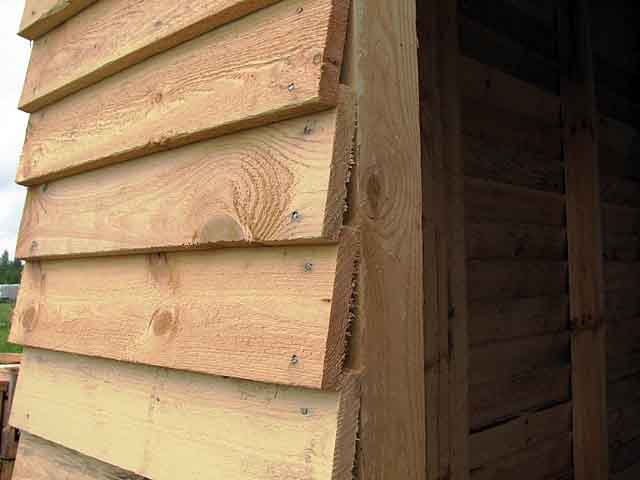
At the end of the finishing, shaped parts made of wood are placed on the corners, basement and roofing junctions, after which the facade is varnished or painted. More information about the installation of lining is described in the following video:
Finished panels
These types of finishing materials cannot be called cheap, but their use allows in most cases to save on the construction of the subsystem. For example, fiber cement panels manufactured using the technology of the Japanese brand Kmew are attached directly to any even walls with several self-tapping screws or dowels. Clinker foam panels are also mounted with lining imitating brick, natural stone and other types of finishes.
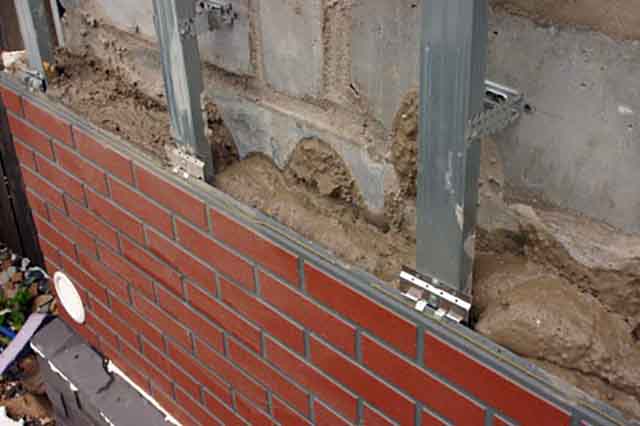
Installation of fiber cement panels on a subsystem of steel profiles
Both types of products have undoubted advantages. The service life of fiber cement boards is equal to the period of operation of the entire building, and they do not lose their appearance over time and are permeable to water vapor. If you want to sheathe the walls with clinker thermal panels, then you will kill two birds with one stone: decorate your house beautifully and insulate it with foam. The installation technology is clearly shown in the video:
Conclusion
As you can see, relatively inexpensive ways outer skin there are many at home. Some of them are more labor-intensive and stretched over time (plaster), others require investment in material at low installation costs (fiber cement panels). Judging by the reviews of homeowners, various types of siding are the undisputed leader in terms of price / appearance of the facade. Well, the cheapest option is corrugated board, which has the bad feature of quickly fading in the sun.




















